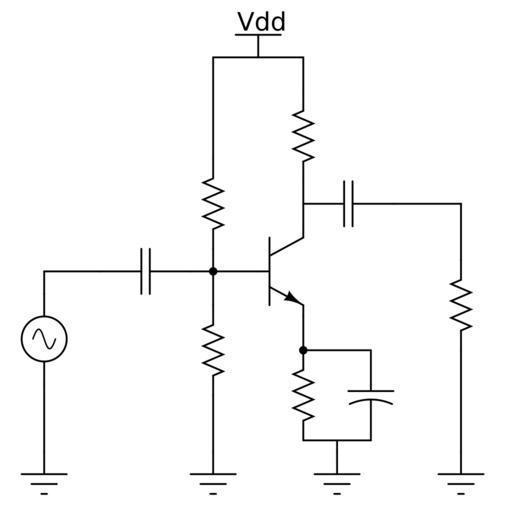
To use a transistor as an amplifier:
(A) The emitter base junction is forward biased and the base collector junction is reverse biased
(B) No bias voltage are required
(C) Both junctions are forward biased
(D) Both junctions are reverse biased
Answer
167.1k+ views
Hint: Transistor is made up of the semiconductor material and is of two types as $PNP$ transistor and the $NPN$ transistor. In these transistors, the $PN$ junction diode is connected back to back with the three terminals in it as base, collector and emitter.
Complete step by step solution
The work of the amplifier is to strengthen the weak signal and the transistor is used for this purpose. In this transistor, the emitter base junction is made forward biased by connecting the voltage across it to maintain the flow of the current by maintaining the polarity of the input current.

Due to the presence of the low resistance in the input, even the small change in it, can cause appreciable change in the output current. The collector is reversely biased by connecting the voltage in the reverse direction, this makes the large voltage drop in it. Hence this makes the transistor as an amplifier by large output voltage from small input voltage.
Thus the option (A) is correct.
Note: Transistors act as both the amplifier and the switch. When using the transistor as the amplifier, it should be properly biased for work. While using the transistor as the switch, the base connecting the emitter and the collector act as the controller or switch.
Complete step by step solution
The work of the amplifier is to strengthen the weak signal and the transistor is used for this purpose. In this transistor, the emitter base junction is made forward biased by connecting the voltage across it to maintain the flow of the current by maintaining the polarity of the input current.

Due to the presence of the low resistance in the input, even the small change in it, can cause appreciable change in the output current. The collector is reversely biased by connecting the voltage in the reverse direction, this makes the large voltage drop in it. Hence this makes the transistor as an amplifier by large output voltage from small input voltage.
Thus the option (A) is correct.
Note: Transistors act as both the amplifier and the switch. When using the transistor as the amplifier, it should be properly biased for work. While using the transistor as the switch, the base connecting the emitter and the collector act as the controller or switch.
Recently Updated Pages
Classification of Elements and Periodicity in Properties | Trends, Notes & FAQs

JEE Main 2021 July 25 Shift 1 Question Paper with Answer Key

JEE Main 2021 July 22 Shift 2 Question Paper with Answer Key

Difference Between Orbit and Orbital in Chemistry Explained (With Table & Diagram)

Difference Between Intensive and Extensive Properties in Chemistry

Difference Between Evaporation and Boiling: Key Concepts, Table & Examples

Trending doubts
JEE Main 2025 Session 2: Application Form (Out), Exam Dates (Released), Eligibility, & More

Uniform Acceleration

Combination of Capacitors - In Parallel and Series for JEE

Electric field due to uniformly charged sphere class 12 physics JEE_Main

Displacement-Time Graph and Velocity-Time Graph for JEE

Atomic Structure - Electrons, Protons, Neutrons and Atomic Models

Other Pages
JEE Advanced Marks vs Ranks 2025: Understanding Category-wise Qualifying Marks and Previous Year Cut-offs

JEE Main 2025: Derivation of Equation of Trajectory in Physics

Electrical Field of Charged Spherical Shell - JEE

JEE Advanced Weightage 2025 Chapter-Wise for Physics, Maths and Chemistry

Learn About Angle Of Deviation In Prism: JEE Main Physics 2025

Wheatstone Bridge for JEE Main Physics 2025




